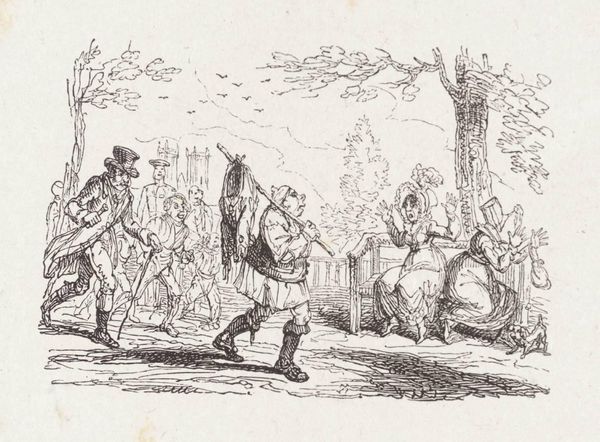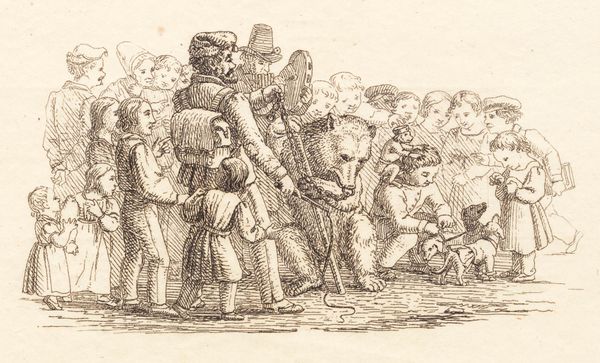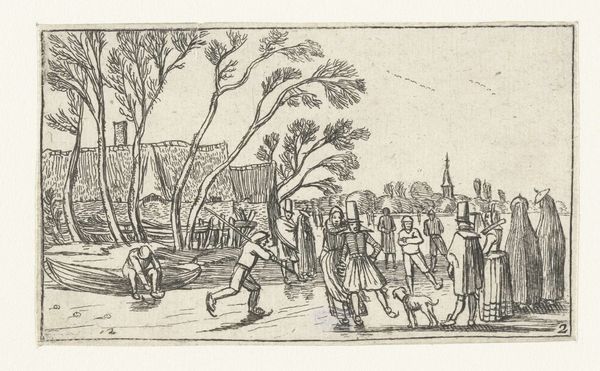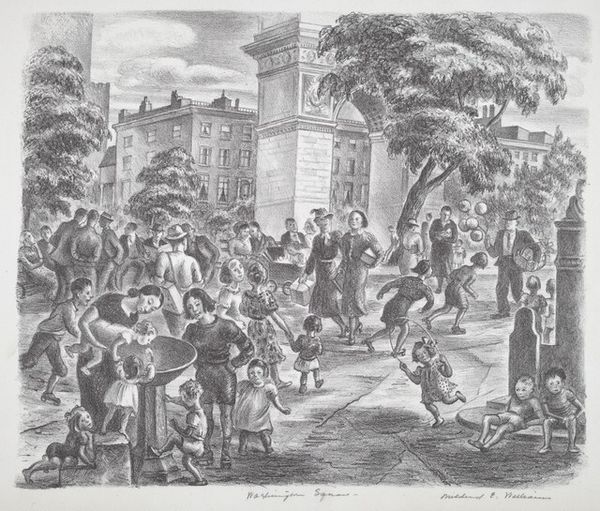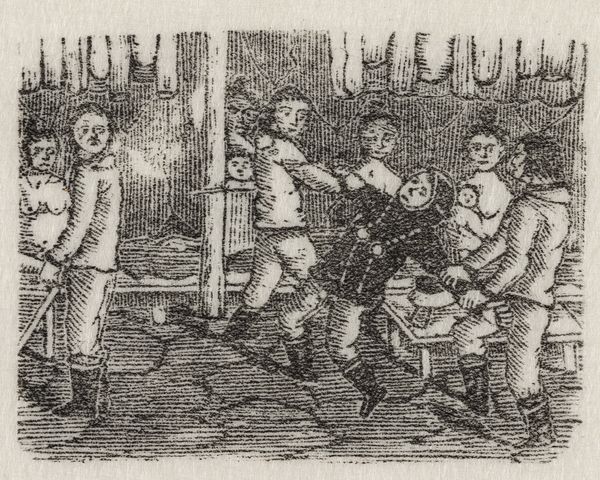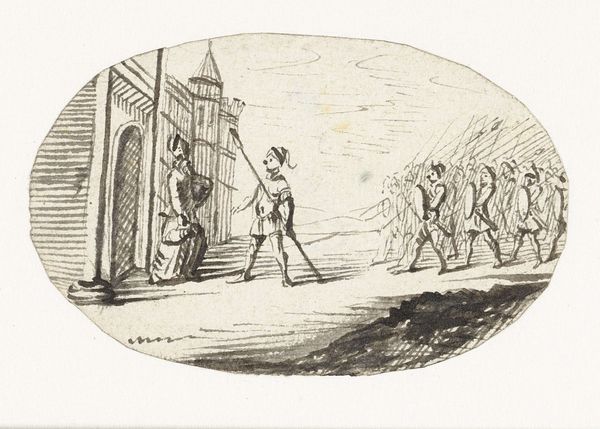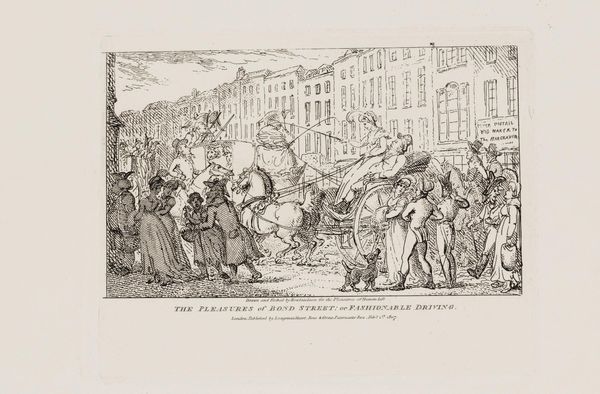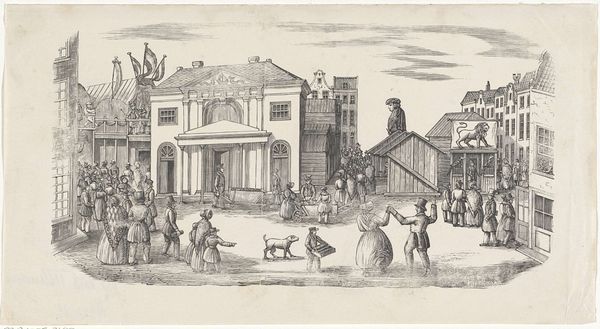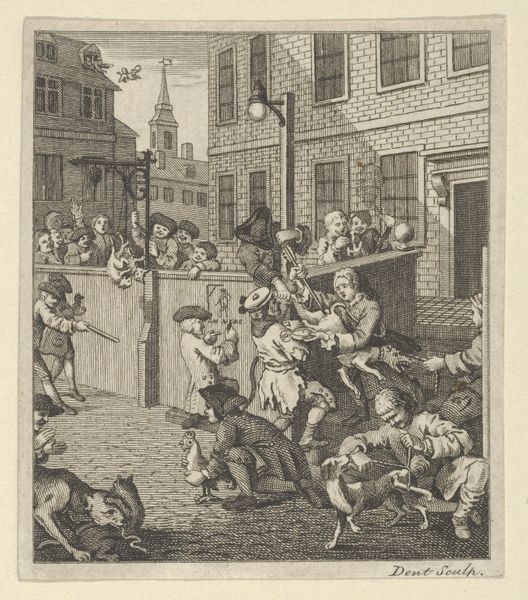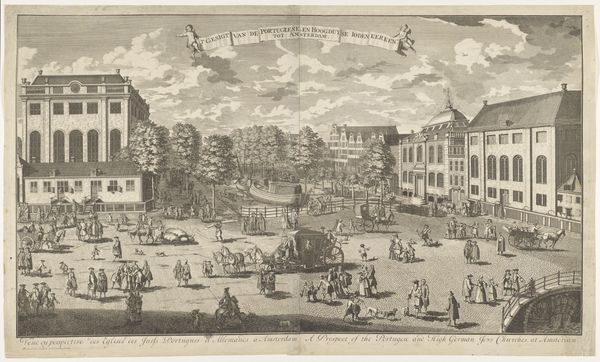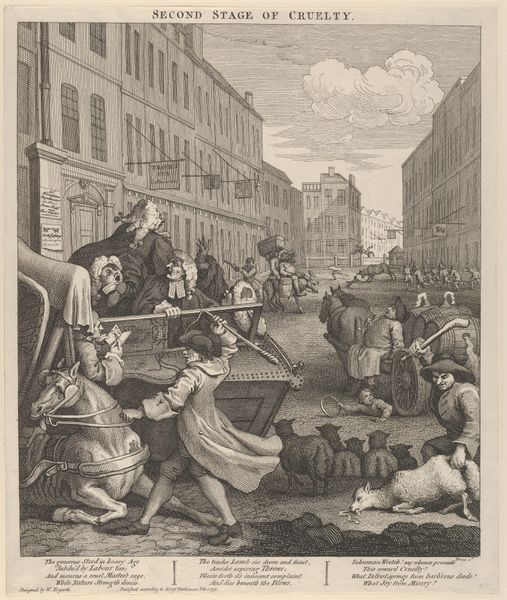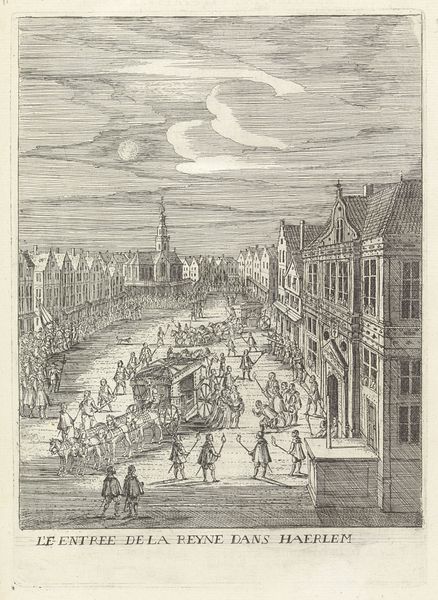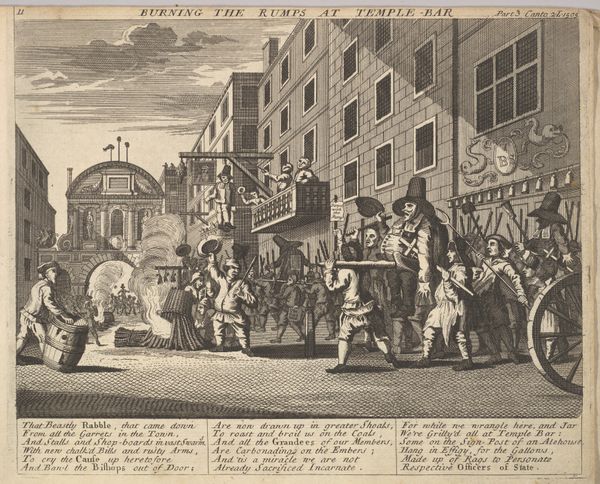
Intrede van prins Willem V en Wilhelmina van Pruisen te Den Haag, 1767 1767 - 1906
0:00
0:00
Dimensions: height 290 mm, width 435 mm
Copyright: Rijks Museum: Open Domain
Curator: What a fascinating glimpse into the late 18th century. This drawing, dated from 1767 to 1906, depicts "Intrede van prins Willem V en Wilhelmina van Pruisen te Den Haag," or The Entrance of Prince William V and Wilhelmina of Prussia into The Hague. Editor: My eye is immediately drawn to the precision of the line work. The controlled rendering gives the scene a lively, yet detached quality. Almost like observing a theatrical performance from a distance. Curator: Indeed. This work, rendered in ink as an engraving, places a strong emphasis on the means of production. The uniformity and reproduction potential speak to a burgeoning print culture, meant for wide dissemination. The engraving highlights social and political events—courtly processions that serve to solidify power. Editor: I see more than just political pageantry. The very act of "entrance" suggests the arrival of something significant. William and Wilhelmina aren't just people; they are embodiments of hope, stability, or perhaps even apprehension, depending on who is doing the viewing. Notice the repetition of flags, and hats, symbols of status all working together to solidify the royalty. Curator: The material itself also plays a role. Ink, an easily accessible material for reproducing imagery, is democratizing in its essence, but here employed to uphold an aristocratic lineage and hierarchy. Look how it renders buildings and urban space, placing royalty within a specific landscape that asserts power within the cityscape of the Hague. Editor: That’s interesting. Consider the cultural context, too. The Hague, then and now, carries symbolic weight. It is a seat of governance, so every architectural detail carries encoded authority, reflected and refracted in the clothing of everyone participating. It transforms from civic space to active tool, to broadcast a unified idea. Curator: Absolutely. And that Rococo style… Such light and airy aesthetics disguising very firm hierarchies. The architecture is an apparatus—much like this very engraving—a machine churning out political and social statements. The very materiality betrays a desire for control. Editor: Agreed. Perhaps these celebrations reflect the aspirations for continuity and legitimacy—the shared desire to secure both present and future. I had initially thought this felt detached and light. Now I think it is a record, both factual and symbolic, of a singular moment. Curator: A great demonstration of how art, even within strict conventions, transmits ideas far beyond the mere representation of events. Editor: Precisely! A moment viewed, yes, but equally, a moment purposefully constructed.
Comments
No comments
Be the first to comment and join the conversation on the ultimate creative platform.
